3 Partition stories for young readers
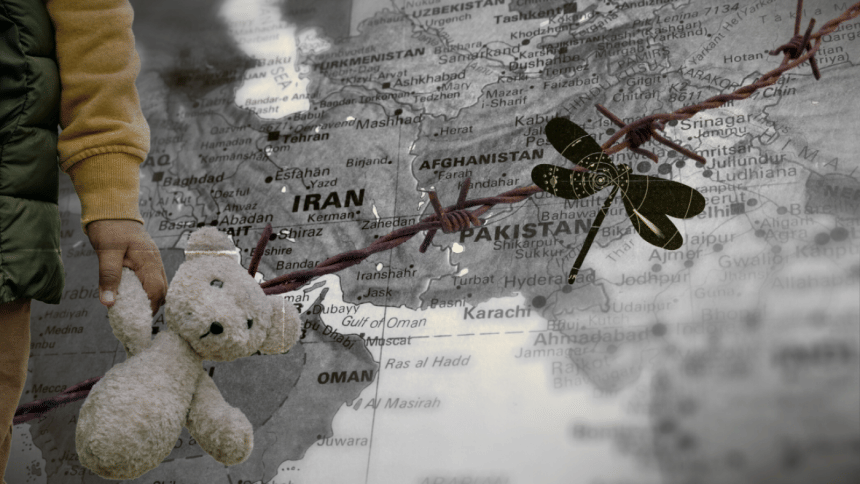
In school, history was conveyed to me in a series of neutralised facts, where Christopher Columbus transformed into an "adventurer". Even now, the history of a forced migration is sanitised into narratives of nationalist pride. My best remembered lesson about the 1947 Partition was through my didoon's (grandmother) stories of a childhood spent in the lush tea gardens of Jolpaiguri. Children don't need to know the jargon of post-colonial theories to get an understanding of the horror of colonisation. They need stories wrapped in the language of empathy, unfiltered by colonial amnesia. Here are three books that can be added to not only your child's but your own reading list.
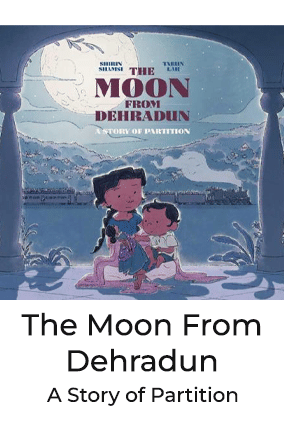
The Moon From Dehradun
Shirin Shamsi, Tarun Lak ( Illustrator)
Simon & Schuster: Atheneum Books for Young Readers, 2022
Reading age: 4-8 years
The book starts as Azra's whole world gets usurped, as circumstances force her and her family towards Lahore. This children's book emphasises the violence of the Partition through a cramped truck that stands against buildings with smoke billowing from them. While an Indian flag flutters proudly replacing the British flag, Azra's family cease to belong in Dehradun anymore. The child's innocent gaze catches these dichotomies as she tries to make sense of this estrangement. Azra holds on to the moon; familiar and undivided—as a source of hope, connecting her with Dehradun and her lost doll.
The vivid illustrations perfectly present both Shamsi's poetic prose and the silences the story demands. While Azra's monologue points to a pot filled with daal, the family's collective witnessing of the puja room inside their new home, with no dialogue tag, reveals a broken community based on religion across borders. The book comes with a map and glossary, but at its core, the story is beyond a history lesson, teaching resilience and belonging.
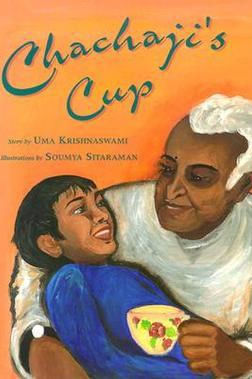
Chachaji's Cup
Uma Krishnaswami,Soumya Sitaraman ( Illustrator)
Lee & Low books, 2015
Reading age: 5-9
Neel loves listening to his great-uncle narrating stories ranging from myths to his own adventures, but he is unable to understand Chachaji's attachment to his old teacup. Then Chachaji unveils the great mystery of the cup related to the harrowing journey he made during partition. But as the anticipation of the future overshadows the past, Neel, tense about an upcoming camping trip, accidentally breaks the teacup. Chachaji gets a heart attack, as if the breaking of the cup had literally broken his heart. In Neels' attempt to heal his uncle's heart, he assembles and glues together the broken pieces of the porcelain cup. Even though Chachaji is unable to drink from the mended cup, it shifts from a personal possession to a collective family heirloom preserved on the mantlepiece. This book is a lesson on the importance of holding onto oral histories, even as the memories get fragmented.
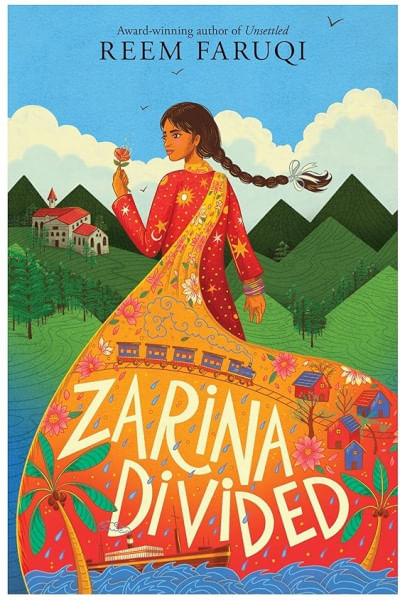
Zarina Divided
Reem Faruqi
HarperCollins,2025
Middle grade
Told in a novel in verse format, Zarina Divided is poetic and powerful. The title captures the physical and metaphysical division of Zarina, who experiences communal divide in the form of shattered friendships; along with geographical change. Post-Partition, Zarina is torn between pursuing a better education in a boarding school or becoming her pregnant mother's caregiver, showing her marginalisation as both a girl and a child. Even though she is too young to understand the magnitude of Partition, the character is emotionally attuned to her own heart-wrenching grief, allowing the book to delve into the full weight of the historical event.
Here, a scrunched nose acts as an accusation, magnifying the shame of being stuck in a crammed space drenched in one's own urine. Reem Faruqi also skillfully highlights moments of kindness while maintaining the deep melancholy of survival. The reading experience is made extra enjoyable because of the interior of the book. The tone of the story is shown using the typography style and letter spacing.A map of the Indian sub-continent at the beginning of the book depicts Zarina's journey.
In the closing pages of the book, Reem Faruqi shares that the story was inspired by her grandmother's experiences and adds photos from her own family archive, which enriches the sensory experience. This inclusion blurs the lines between personal ancestry and history, but successfully conveys the depth of the inter-generational trauma.
Zarin Junainah Anam is an English Literature major and a day-dreamer. She also writes at Cha-time with Junta on Substack because life's always better with a little drama, a little bit of sarcasm, and far too many cups of tea.

 For all latest news, follow The Daily Star's Google News channel.
For all latest news, follow The Daily Star's Google News channel. 


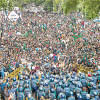

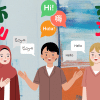



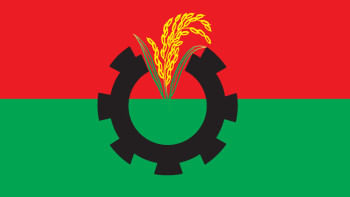
Comments